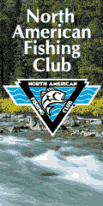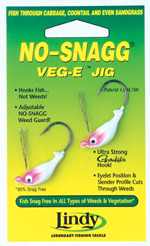 |
|||||
|
Promotional Team Favorites Lodging food and more 
|
By Ted Takasaki and Scott Richardson
Most anglers believe that they know all about jigs just because jigs have been around ever since man first pinched lead shot on a hook. But, that’s just not so. Jigging basics may seem simple enough and mastering the fundamental of jigging technique can mean the difference between catching fish and not. Try this 10-step program to better jigging. Step 1: Stay on the bottom
Admit it. We all go to the water with notions of what should work. No where is that more apparent than in choice of colors. Jig heads and plastics come in a thousand hues. Yet, we insist on using the same old favorites. Just because something worked yesterday or even this morning doesn’t mean it will work now. Water clarity and light conditions change constantly. Use trial and error until you find a combination that triggers strikes.
Since jigs are one of the oldest, most effective live-bait delivery systems we have, we’ve developed "rules" over the years on when minnows, nightcrawlers or leeches should work best. Minnows are the choice in the cold water of spring and fall. Leeches are the favored bait in warm water. Nightcrawlers seem good across the calendar. But, don’t be afraid to break the rules. There’s been many times during spring floods when walleyes inhale worms and ignore minnows. See what works. The fish will let you know. Step 6: Alter jig action Walleyes will absolutely destroy a bait at times. At others, they don’t seem interested at all. Perhaps a cold front has passed through or the wind direction changed. Keep testing their mood. Attract the most-aggressive fish by popping your jig up, then letting it fall back to the bottom. Follow the jig down with the rod tip to keep your line taut in order to maintain control of the jig. Next, try a slow lift-drop, lift-drop. Then, drag it on the bottom or quiver it slightly. Step 7: Concentrate Visualize your jig. Imagine where it is in the water and what it looks like to fish. Better yet, use an underwater fish cam like the Aqua-Vu to see exactly how walleyes react to your bait. We’ve found most anglers often "over-jig." Use your jig as a tool to gather information. For example, try to feel subtle changes in the bottom. Spots where it changes from hard to soft can be key. Intense focus also helps when bites are so light that nothing at all is telegraphed up your line through your rod. A slight movement or "heavy" feel may be all the notice you get. Set the hook at the slightest change. Step 8: Two rods better than one Practice using two matched rod and reel combos, if your state allows. Test different colors and livebait on each. But, if you find it hard to control both rods to keep both jigs in the strike zone, put one rod down or use it as a "dead-stick" in a rod-holder. One jig fished correctly is better than two fished poorly. Step 9: Practice boat control Boat control is essential to good jigging. In current, point your bow upstream or into the wind and use short bursts from an electric trolling motor to match your boat speed with the water flow. Keep your line vertical below the boat and watch your rod tip for a slight bow to signal bottom contact. All rules have exceptions. There are places like the Rainy River where walleyes seem to prefer stationary jigs below anchored boats. Try that, too. In absence of current, a puck transducer mounted on your trolling motor to feed data to your bow-mounted sonar or flasher helps keep your jig on the critical "spot on a spot." Step 10: Fish fish The best jigging mechanics won’t do any good if you aren’t fishing where the fish are. Study the map of lake or river section you are targeting to find likely spots using what you know about walleye movements in the calendar period. Along the way , stop at more than one bait shop for the latest word on where the bigger schools are located and for an idea of what presentations others are using. Ask questions at the ramp. Once on the water, move from spot to spot using your electronics to find forage fish and likely walleyes before you start to fish. These tips are sure to make you a better walleye angler. Jigging is one of the key fundamental presentations to master. Fish Clix Banner Exchange Please visit these site sponsors |
||||
|---|---|---|---|---|---|
